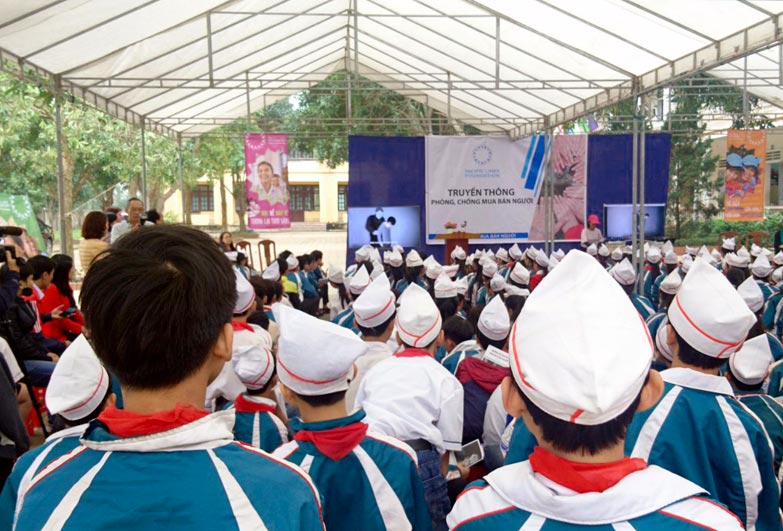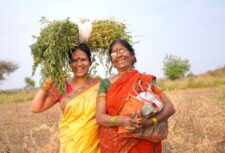Disclaimer: This article is more than 5 years old, and may not include the most up-to-date information or statistics. Please verify information with more recent sources as needed, and if you have any questions contact our Press Office.
Leah Davison analyses the complex problem of trafficking of children and young people from Vietnam to Europe

05 Sep 2018
Vietnam has been consistently one of the top source countries for trafficking into the UK for the past five years. Only last year 739 Vietnamese people were referred to the UK authorities as potential victims of trafficking, including 363 children. Most of Vietnamese children and young people are exploited by ruthless criminal gangs in cannabis farms, in nail bars and in brothels.
Yet despite this issue being on the radar of authorities since our research in 2014 into trafficking into criminal exploitation in Britain, its full scale and nature remains unknown. Which is why we are working with ECPAT UK and Pacific Links Foundation to develop a more complete picture of trafficking tactics used to exploit vulnerable Vietnamese children, and the response to it.
Vulnerability from the start
Despite the high amount of economic development in Vietnam that has lifted millions out of poverty, many have been left behind. The overall development throughout the country has been uneven and job opportunities are concentrated in urban areas.
Driven by a belief that overseas jobs are the most lucrative, coupled with the desire to escape poverty in disadvantaged or rural areas, many Vietnamese job seekers take risks with labour brokers, who are in fact traffickers. It is common to borrow money – sometimes up to 30,000 US dollars – from lenders who are connected to trafficking networks and then become ensnared in debt bondage.
Last year when I visited Nghe An, a large province in North Central Vietnam known for high levels of trafficking cases, I watched as a group of 400 students was asked “how many of you have family members who have moved abroad for work?”, approximately 90% of the students raised their hands.
If migration in search of economic opportunity is so engrained in communities, it is important to provide young people with accurate information about the false promises labour brokers may be making. We shared ECPAT UK’s short film The Secret Gardeners with the students in Nghe An, that our partners use in their wider campaign to raise awareness of trafficking across Vietnam.
The Journey from Vietnam through Europe
Children trafficked out of Vietnam commonly make incredible long journeys through half of the world. First, they often transit through Russia, before moving onto Eastern and Central Europe. Those who travel to the UK will likely spend time living in a temporary migrant camp known as ‘Vietnam City’ near Calais in France, based in an abandoned house atop an old coal mine in the forest.
Along their long journeys, that sometimes take months or even years, young Vietnamese are likely to be forced to work in various industries or into sexual exploitation. Part of their journeys may include walking long distances, or trying to get on the back of lorries, especially to get across borders.
Running away from Care
In all European transit countries, including France, Netherlands and Germany, young people are sometimes identified by border agents, police or other actors as potential victims of trafficking. They might end up in a shelter, with an offer of basic services and guidance on how to seek asylum in that country or return home to Vietnam. However, it is common for Vietnamese children to run away from these shelters.
Both in the UK and in the Netherlands the research suggests that Vietnamese children are the largest group to disappear from protected shelters. Visiting such a shelter earlier this year in the Netherlands I heard stories of young people who left the care did not necessarily want to leave the shelters that were supporting them, but had to because of remaining under the control of their traffickers. This suggests that even when authorities do come in touch with Vietnamese trafficking victims, they still fail to protect them.
Breaking the Cycle
To break the cycle of human trafficking from Vietnam we must understand and address the root causes prompting young people to leave. We must also understand how the vicious cycle of exploitation that is connected to these root causes, for example the fact that approximately 60% of all traffickers arrested in Vietnam are former victims of trafficking (according to the Vietnamese Ministry for Public Security).
Some of these issues can be addressed at a grassroots level in Vietnam with education and with alternative economic opportunities. Our partner Pacific Links Foundation provides vocational training opportunities for young people at risk of trafficking and operate reintegration shelters for victims in Vietnam.
However, tackling the issue requires more than a grassroots prevention approach. Given the precarious journey young Vietnamese people take, enacting cross-border mechanisms for better communication between countries could strengthen child protection systems and help break this vicious cycle of vulnerability.
In 2019 we will produce a research report with detailed recommendations on how to do it. But we must start taking this issue seriously without any further delay. The future of thousands of Vietnamese children is at stake.
Story of TDT
Vietnamese boy trafficked into the UK
A Vietnamese 15-year-old boy, known only as TDT, was found by police in the back of a lorry in Kent in September 2015.
He was treated by the Immigration Enforcement as an adult and placed in immigration detention. No age assessment was carried out and he was not initially treated as a potential trafficking victim, despite presenting clear indicators.
After seeing a specialist support worker at the Refugee Council, he was referred to the National Referral Mechanism (NRM) as a potential victim of trafficking. His lawyer challenged the Home Office on various aspects of his treatment and called for his release into safe and secure accommodation. The Home Office did not reply.
He was subsequently released without any measures in place to protect him from re-trafficking. He was released to an address that was not residential but listed as a Buddhist temple. He was last seen by police with a man at Gatwick Airport railway station and has not been seen since.
The UK Government was found to be in breach of its obligations under Article 4 of the European Convention on Human Rights for failing to protect the boy from trafficking by the Courts of Appeal.





